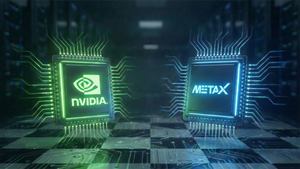
Qualcomm's (NASDAQ: QCOM) bold entry into the Windows PC market with its Snapdragon X series processors, featuring the Snapdragon X Elite and Snapdragon X Plus, marks a pivotal moment for the technology industry. Launched in mid-2024, these ARM-based chips are designed to challenge the decades-long dominance of Intel (NASDAQ: INTC) and AMD (NASDAQ: AMD) in traditional x86 computing, while simultaneously ushering in a new era of AI-enabled PCs. This strategic move by Qualcomm, in close partnership with Microsoft (NASDAQ: MSFT), signals a fundamental shift in how personal computers are designed, powered, and utilized, with profound implications for consumers, developers, and investors alike.
The immediate implications are clear: a reinvigorated PC market driven by on-device artificial intelligence capabilities and fierce competition among chipmakers. As of late 2025, the market is already witnessing the early stages of this transformation, with the initial wave of Snapdragon X-powered laptops demonstrating both promise and challenges. The success or failure of these chips could redefine market leadership, accelerate innovation in AI hardware, and dictate the future trajectory of the personal computing experience.
The Dawn of the AI PC: Qualcomm's Strategic Offensive
Qualcomm's Snapdragon X series chips, including the powerful Snapdragon X Elite and the more accessible Snapdragon X Plus, officially began shipping in the first wave of Windows laptops in June 2024. This launch was followed by an expansion in September 2024 with a more affordable 8-core Snapdragon X Plus chip, further broadening the portfolio. Looking ahead, the company has already announced its second-generation chips, the Snapdragon X2 Elite and X2 Elite Extreme, slated for release in the first half of 2026, underscoring its long-term commitment to this market.
At the heart of these processors are Qualcomm's custom-designed Oryon CPU cores, integrated Adreno GPUs, and a dedicated Hexagon NPU (Neural Processing Unit). The Snapdragon X Elite boasts up to 12 high-performance Oryon cores, with a dual-core boost up to 4.3GHz, and an NPU capable of an impressive 75 TOPS (trillions of operations per second). The Snapdragon X Plus, while slightly less powerful, still offers 10-core or 8-core configurations and an NPU with 45 TOPS, positioning both firmly within Microsoft's "Copilot+ PC" designation, which requires a minimum of 40 TOPS for AI processing. These specifications are crucial for enabling advanced on-device AI features in Windows 11, such as real-time language translation, enhanced voice recognition, and AI-driven productivity tools without relying heavily on cloud services. Key players in this rollout include Qualcomm as the chip architect, Microsoft as the operating system provider, and various PC manufacturers like HP (NYSE: HPQ), Dell (NYSE: DELL), Lenovo (HKEX: 0992), and Samsung (KRX: 005930), who are integrating these chips into their new laptop lineups.
Initial market reactions have been a mixed bag. While Qualcomm made strong performance claims, particularly regarding CPU performance and power efficiency against Intel's Core Ultra and Apple's (NASDAQ: AAPL) M3 chips, early reviews in mid-2024 indicated that real-world performance didn't always meet expectations, especially in application compatibility and gaming. Many Windows applications, traditionally compiled for x86 architecture, required emulation, leading to performance compromises. Despite these hurdles, the exceptional battery life offered by Snapdragon X-powered devices was widely praised. Market share data for Q3 2024 revealed a modest start, with Snapdragon X Elite chips powering only 0.8% of the entire PC market, translating to approximately 720,000 units sold. This indicates that while the potential is significant, widespread adoption hinges on improved software optimization and broader application compatibility.
Shifting Sands: Who Stands to Win or Lose?
The entry of Qualcomm's Snapdragon X series into the Windows PC arena is poised to create a new hierarchy of winners and losers within the technology ecosystem. Clearly, Qualcomm (NASDAQ: QCOM) itself stands as a primary potential winner. By successfully diversifying its revenue streams beyond smartphones and into the lucrative PC market, the company can tap into a massive new addressable market. Its strong focus on AI capabilities positions it as a leader in the burgeoning AI PC segment, potentially driving significant long-term growth as AI integration becomes standard.
Microsoft (NASDAQ: MSFT) is another significant beneficiary. By embracing ARM-based architecture with Qualcomm, Microsoft gains a crucial ally in its quest to evolve Windows 11 into a truly AI-native operating system. The success of Snapdragon X chips is directly tied to the success of Microsoft's Copilot+ PC initiative, offering a pathway to differentiate Windows PCs from Apple's M-series Macs and enhance the overall Windows user experience with powerful on-device AI. This collaboration could rejuvenate the Windows ecosystem, fostering innovation and potentially increasing its market share against competitors. PC manufacturers such as HP (NYSE: HPQ), Dell (NYSE: DELL), Lenovo (HKEX: 0992), and Samsung (KRX: 005930), who are launching devices with Snapdragon X chips, also stand to gain. They can offer consumers a new class of PCs with superior battery life and AI capabilities, potentially capturing a new segment of the market and differentiating their products in a highly competitive landscape.
Conversely, Intel (NASDAQ: INTC) and AMD (NASDAQ: AMD) face significant challenges. For decades, these x86 architecture giants have held a near-monopoly in the PC processor market. Qualcomm's entry directly threatens their market share, particularly in the premium laptop and AI PC segments. While both Intel and AMD are rapidly developing their own AI-enabled processors (like Intel's Core Ultra series and AMD's Ryzen AI), they must now contend with a formidable new competitor that offers compelling power efficiency and dedicated AI hardware. This increased competition will likely put pressure on pricing, accelerate their R&D cycles, and force them to innovate more aggressively to maintain their standing. The shift could lead to a gradual erosion of their traditional dominance, especially if software compatibility for ARM-based Windows improves rapidly.
Broader Implications: Reshaping the Computing Paradigm
Qualcomm's foray into Windows PCs with its Snapdragon X series is more than just a new product launch; it represents a fundamental shift in the broader computing industry, fitting squarely into the emerging trend of AI PCs. This event signifies a pivotal moment where on-device AI processing becomes a standard, moving away from a purely cloud-centric AI model. By embedding powerful NPUs directly into the silicon, Qualcomm is enabling a new class of applications that prioritize privacy, speed, and efficiency by executing AI tasks locally. This aligns with a wider industry movement towards hybrid AI architectures that leverage both edge and cloud computing.
The ripple effects of this architectural shift are substantial. For software developers, it necessitates a re-evaluation of how applications are built and optimized. Developers will need to ensure their software runs natively and efficiently on ARM architecture and, crucially, learn to harness the power of dedicated NPUs for AI workloads. This could lead to a vibrant new ecosystem of ARM-native and AI-accelerated applications, but also presents a learning curve and investment challenge. For peripheral manufacturers, the shift might influence design choices, prioritizing devices that seamlessly integrate with the new AI capabilities of these PCs. Historically, the PC market has been dominated by the x86 instruction set. Qualcomm's move mirrors Apple's (NASDAQ: AAPL) highly successful transition from Intel processors to its in-house ARM-based M-series chips, which demonstrated the immense potential for performance and power efficiency gains. This historical precedent provides a blueprint for Qualcomm, but also highlights the challenges of software migration and ecosystem building. The regulatory landscape has not yet seen direct implications, but as AI becomes more pervasive on devices, future discussions around data privacy, security, and algorithmic bias could potentially involve these new AI PC platforms.
The Road Ahead: Evolution and Adaptation
Looking ahead, the short-term trajectory for Qualcomm's Snapdragon X series will be defined by continued software optimization and market penetration. The immediate challenge for Qualcomm and Microsoft is to broaden the ecosystem of ARM-native applications and ensure seamless compatibility for legacy x86 software through efficient emulation. As more developers optimize their applications for ARM and leverage the NPU, the performance gap for critical workloads should narrow, making Snapdragon X PCs more appealing to a wider audience. We can expect to see an increasing number of PC OEMs adopting these chips across various price points, driven by consumer demand for longer battery life and integrated AI features.
In the long term, the arrival of the second-generation Snapdragon X2 Elite and X2 Elite Extreme chips in the first half of 2026 will be a critical milestone. These chips are anticipated to bring significant performance boosts and an even more powerful NPU (up to 80 TOPS), further intensifying competition with Intel's and AMD's next-generation AI processors and Apple's M-series chips. This will create immense market opportunities for innovation in AI applications, from advanced creative tools to more sophisticated personal assistants. However, challenges remain, including convincing enterprise customers to transition from established x86 platforms and ensuring that the promise of AI PCs translates into tangible productivity gains for everyday users. Strategic pivots for Intel and AMD will involve accelerating their own AI chip development, emphasizing hybrid architectures, and potentially exploring new licensing models or partnerships to defend their market share. The ultimate outcome will depend on a combination of hardware innovation, software ecosystem maturity, and consumer adoption.
A New Chapter for Personal Computing
Qualcomm's audacious entry into the Windows PC market with its Snapdragon X series chips represents a watershed moment, fundamentally reshaping the personal computing landscape. The key takeaway is the undeniable shift towards AI-enabled PCs, where on-device intelligence becomes a core differentiator. While initial market reception has been mixed, highlighting the challenges of disrupting an entrenched ecosystem, the long-term potential for Qualcomm to carve out a significant share in this evolving market is substantial, particularly given its strong partnership with Microsoft.
Moving forward, the market will be characterized by intensified competition among chipmakers – Qualcomm, Intel, and AMD – each vying for leadership in the AI PC era. Investors should closely watch several key indicators: the growth in market share for Snapdragon X-powered devices, the rate of software optimization and native ARM application development, and the performance and reception of Intel's and AMD's competing AI-focused processors. The success of the second-generation Snapdragon X2 chips in 2026 will be particularly telling. This is not merely a battle over silicon, but a contest to define the future of how we interact with our computers, with lasting impacts on innovation, market dynamics, and ultimately, the end-user experience.
This content is intended for informational purposes only and is not financial advice.





